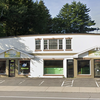Guilderland’s comprehensive plan process begins to take shape
GUILDERLAND — Some 20 years after it first mapped a vision for its future, Guilderland is beginning the process to update its comprehensive land-use plan.
At the May 17 town meeting, Supervisor Peter Barber told board members that he hopes to present them in June with a request for proposals for a contractor to run the comprehensive plan process for the town.
A comprehensive plan, according to New York State, “should provide the backbone for the local zoning law … [it’s] the culmination of a planning process that establishes the official land use policy of a community and presents goals and a vision for the future that guides official decision-making.”
Barber said he thought it was in March 2020, a week before the pandemic shut down everything: “We had a board meeting [and] said, ‘Hey, we’re going to do a comprehensive plan.’ And then all of a sudden, pandemic hit and everything froze.”
It didn’t seem appropriate to start the process then because public participation is at the core of the process, which involves public meetings, he said.
Barber said the first step in the planning process is a grant from the Capital District Regional Planning Commission for an organization to perform “some background work on the town” that looks at Guilderland’s residential growth from about 1990 through 2020.
The CDRPC will also examine occupancy, employment, and businesses in town, Barber said, as well as looking at building permits. “For the most part,” he said, it will be a “very objective look” that’s “supposed to give a good idea of where the town has developed over the past 30 years.”
The CDRPC study is expected any day, Barber said.
Town Planner Ken Kovalchik has been doing a lot of behind-the-scenes work on the plan, Barber said. The neighboring town of Bethlehem has just finished its comprehensive plan, a three-year process, for which Kovalchik had been present at the start, so “I think he’s got a pretty good idea of what the next steps are,” Barber said.
The process itself is going to be an expensive one, the supervisor said, well over $100,000, and maybe over $200,000. Barber said the town earmarked $120,000 of its American Rescue Plan Act funds to pay for a consultant, adding there are also grant opportunities the town will apply for.
The size and composition of the comprehensive plan committee needs to be decided. “When we last did this back in 2002,” Barber said, the committee “had 31 members” and he remembered the number “because I was the 31st member.” Barber had just been named to chair the zoning board. The chairs of both the planning and zoning boards served on the 2002 committee, Barber said.
He said the model followed by Bethlehem, which is also the one followed by East Greenbush, was to have a comprehensive plan committee with nine or 10 members and then have a series of focus groups on specific concerns, for example, by neighborhood, or on senior-citizen issues, or on first-responder issues, or on infrastructure.
Councilwoman Christine Napierski asked if the town would be advertising the comprehensive plan committee positions so that members of the public could apply. Barber wanted to discuss the issue more at the board’s next meeting, but said, “I think you want to try to find people who have some experience in land use … You want to get some bedrock of people that really have an understanding: architects and engineers and whatnot.”
But he also said there should be citizen-representatives from different parts of the town who vary in age and background. “We want a cross section of all types of people from our town,” Barber said.
The town board will appoint the comprehensive plan committee members.
Councilwoman Amanda Beedle asked about a timeline, and Barber told her that the request for proposals Bethlehem had issued envisioned a year-and-a-half process but, in the end, it ended up taking three years.
While Barber recognized the Bethlehem process was carried out in the midst of the pandemic, he said that Bethlehem continued to hold virtual meetings, but it slowed the process “quite a bit.” He ended up estimating the comprehensive plan process for Guilderland would take two years.
Barber said he would speak to people from Bethlehem to learn from their process, to avoid the pitfalls they had.
He cited as an example a separate comprehensive plan website set up and maintained by the town employees. “It took three or four staff members to maintain that,” Barber said, “and I think we might want to figure out a way of having the consultant at least put [the website] together … take some of that burden off our staff.”
Barber said “those are the sort of lessons learned” he wants to take away from his visit to Bethlehem.
Altamont resident Ted Neumann asked, “When the comprehensive plan is made, and passed, what kind of teeth is it actually going to have?”
Barber said, when a comprehensive plan is adopted by a board, “It is a very important document.”
The next step, after the town board adopts the new plan, is for the board to look at the town’s zoning code and land uses, and to look at whether the existing code needs to be modified because the community has spoken on the matter. And, while the greater community may have a say about a particular area of Guilderland, the town still has to be attuned to the wants, needs, and rights of individual property owners, Barber said.



